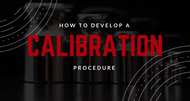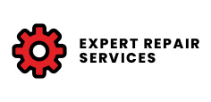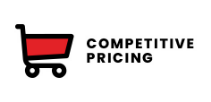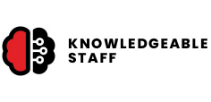What to Consider When Developing a Calibration Procedure
Posted by Ben M on May 14th 2018
Do you have an internal scale calibration procedure? Are you working on creating a procedure for scale calibrations within your company? We've put together some important information to consider when developing your calibration procedure.
Some of the main components that a scale calibration SOP (Standard Operating Procedure) should address is allowable tolerances, calibration intervals, management of calibration records, who can perform the calibrations, asset management, and how to handle an out of tolerance condition. Let's go into further detail for each.
Allowable Tolerances
Establishing and documenting the appropriate allowable tolerance for each individual scale is important. In the case of legal for trade weighing applications, the allowable tolerances are set by the local government's weights and measures division. Most states in the US have adopted NIST Handbook 44 to serve as the guideline for their regulations. In non-legal for trade applications, your organization is responsible for establishing the allowable tolerances for each scale. This tolerance could be established based on your own quality guidelines, an industry standard or your customers specifications.
Calibration Intervals
The amount of time between calibrations is another important thing to consider. One of the most common intervals is 1 year but in applications where accuracy is very important, time intervals between calibrations are usually shortened to months, or in some cases daily. It's important to establish your calibration interval and document it while developing your SOP. You'll want to create a compliance method to ensure that the calibrations are being completed as scheduled.
Related Read: 5 Step Scale Calibration Guide
Calibration Records
Once a calibration is completed, records should be kept for audit purposes. This could be for internal audits or for external audits that are commonly required by many industry standards. Records should show what piece of equipment was calibrated, what standards were used for the calibration, who performed the calibration, the date, the next scheduled date and the actual test data.
Many external service providers have software that helps lay all this information out in an orderly manner. The software also assigns a unique ID number to each calibration record so it can easily be referenced if necessary in the future. It is also common practice to place updated calibration stickers on each piece of equipment after it has been calibrated.
Who Performs Calibrations
In legal for trade applications, it's common for a registered service company or local weights and measures to perform calibrations. In non-legal for trade applications, you can determine whether or not you complete calibration in-house or hire a contractor. In most cases, companies hire an external service provider to do their calibrations. Using an external service provider helps guard against any potential conflict of interest, alleviate expensive test standard costs and ensures the test are performed by an experience professional every time.
Related Read: 5 Step Scale Calibration Guide
Asset Management
Keeping an updated list of weighing equipment that shows their unique ID, location, last calibration date, and next calibration date is very helpful when managing a quality program. It is an easy way to prepare for audits and schedule upcoming calibrations. A list like this is often times built right into the software used by many external providers.
Out of Tolerance Conditions
Including documentation in your SOP of what to do when a scale is found to be out of tolerance is very important for most companies. For some companies an out of tolerance condition might trigger a product recall. For yours, it might not be so important. In cases where a scale is constantly found to be out of tolerance it may be necessary to shorten the interval between calibrations.
Understanding the variables above will help you develop a solid calibration SOP within your organization. Not all regulations, companies or projects require it but when you need a solid calibration routine, use the information here to help get yours down!
__
 Have questions about calibration standard operating procedures? Do you have something to add? Drop us a line! Let us know what you think.
Have questions about calibration standard operating procedures? Do you have something to add? Drop us a line! Let us know what you think.





